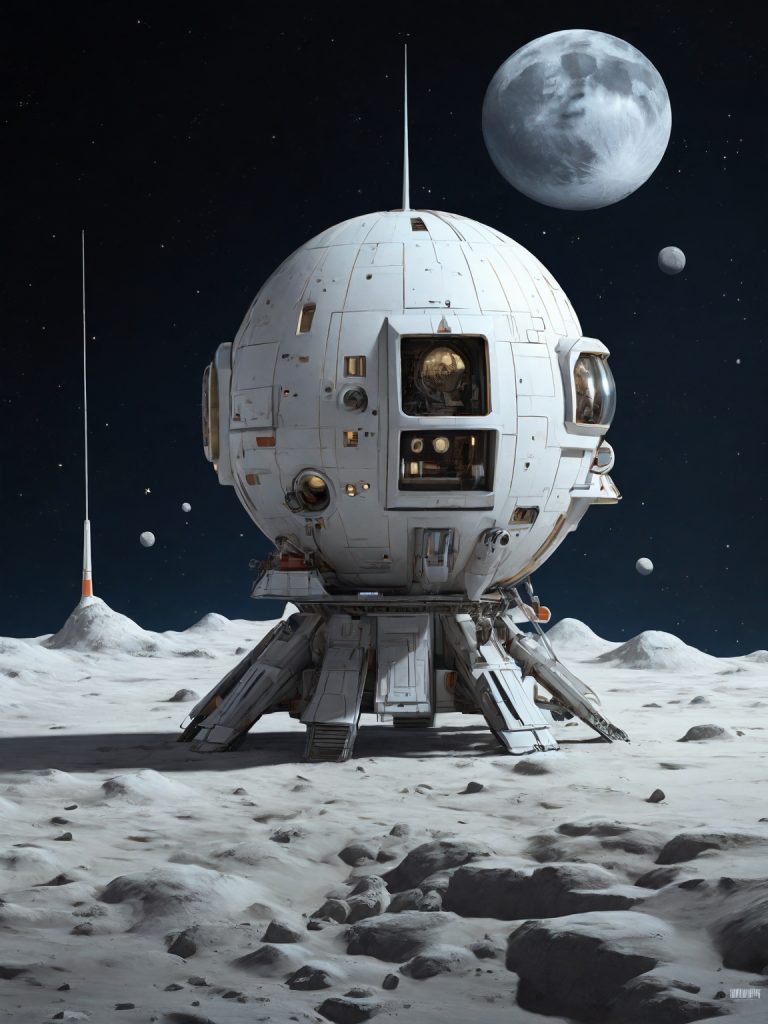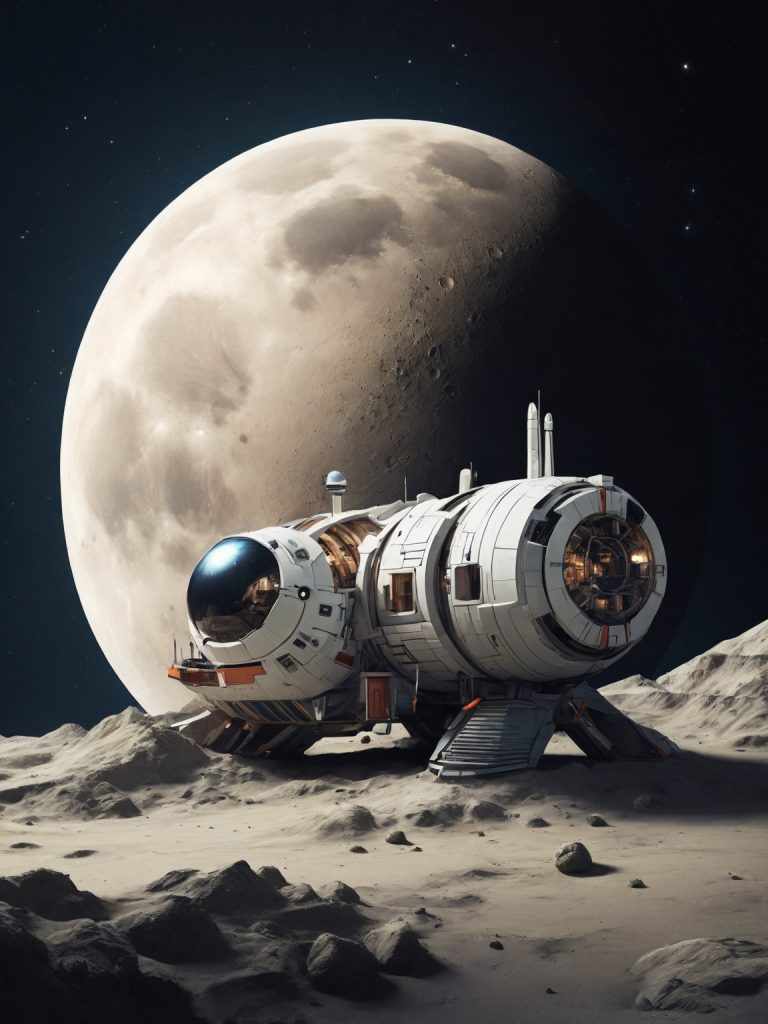This article goes beyond simply reporting the incident with the Odysseus lander. It delves deeper, offering valuable insights and takeaways for anyone interested in space exploration. You won’t find these unique perspectives anywhere else – discover how setbacks can be transformed into opportunities for learning and growth, fostering a deeper understanding of the challenges and triumphs involved in the incredible journey of space exploration.
TL;DR
- Robust landing mechanisms and engineering designs are crucial for moon landers.
- Risk management and contingency planning are essential for unforeseen situations.
- Adaptability and problem-solving skills are key to handling unexpected events.
- Learning from failures helps improve future missions.
- Resilience and perseverance are crucial for overcoming challenges in space exploration.
The recent incident with the Odysseus moon lander, which landed on its side, offers valuable lessons that can benefit future space exploration endeavors. While the event might seem like a setback, it presents an opportunity to learn, adapt, and ultimately move forward with greater knowledge and preparedness.
1. The Importance of a Strong Foundation

The incident highlights the crucial role of robust landing mechanisms and meticulous engineering design in space missions. Moon landers, especially those venturing into the unpredictable lunar terrain, need to be equipped with reliable systems that guarantee stable touchdown and minimize the risk of tipping.
2. Planning for the Unforeseen
The event emphasizes the importance of comprehensive risk management and contingency planning in any space mission. While simulations and extensive testing are crucial, unexpected circumstances can arise. By having contingency plans in place, mission teams can be better equipped to handle such situations, potentially mitigating risks and ensuring the mission’s success.
3. Adaptability: The Key to Success in Space

Space exploration demands adaptability and resourceful problem-solving skills. When faced with unforeseen events like the lander’s unexpected tilt, mission controllers and engineers need to act swiftly to assess the situation, analyze available data, and devise innovative strategies to potentially salvage the mission or gather valuable data despite the setback.
4. Learning from Setbacks: A Catalyst for Progress
Failure is an inevitable part of the exploration and innovation process. Every unexpected event, just like the lander’s tilt, presents an opportunity to learn and improve future missions. By thoroughly analyzing the factors that contributed to the tipping over, valuable insights can be gleaned, informing the design and operation of future lunar missions, ultimately leading to safer and more successful endeavors.
5. The Power of Resilience: Overcoming Challenges

The incident underscores the resilience and perseverance required in space exploration. Even when faced with setbacks, the mission team needs to remain determined and focused on overcoming challenges to achieve their objectives. This unwavering spirit is vital for pushing the boundaries of human exploration and expanding our understanding of the universe.
By embracing these lessons, the space exploration community can transform setbacks into opportunities for growth. The incident with the Odysseus moon lander serves as a reminder that the journey to the stars, while fraught with challenges, is ultimately driven by a relentless pursuit of knowledge, innovation, and the unwavering spirit of exploration.
Astronaut’s Guide to Resilience and Perseverance
| Challenge | Action | Outcome |
|---|---|---|
| Unexpected technical issues: Equipment malfunction, software glitches | Stay calm and assess: Analyze the situation, prioritize tasks, communicate clearly. | Maintain mission progress: Adapt, improvise, find alternative solutions. |
| Demanding work environment: Long hours, confined spaces, isolation | Focus on the goal: Remember the bigger picture and purpose of the mission. | Maintain mental and physical well-being: Exercise regularly, practice relaxation techniques, maintain positive communication with ground control and loved ones. |
| Setbacks and failures: Experiments not going as planned, mission objectives not fully met | Learn from mistakes: Analyze what went wrong, identify areas for improvement. | Grow and improve: Apply lessons learned to future endeavors, celebrate incremental progress. |
| Facing the unknown: Exploring uncharted territory, encountering unexpected phenomena | Embrace curiosity and adaptability: Be open to new discoveries, be willing to adjust plans based on new information. | Fuel the spirit of exploration: Remember the privilege of venturing into the unknown, contributing to scientific advancement. |
Did NASA name the Odysseus moon lander?
NASA did not directly name the Odysseus moon lander. It was developed and launched by a private company called Intuitive Machines. However, the company chose the name “Odysseus” for the lander, likely due to the following reasons:
- Connection to Greek Mythology: Odysseus, from Homer’s epic poem “The Odyssey,” is a legendary hero known for his ingenuity, perseverance, and resourcefulness in the face of countless challenges during his long journey home. These qualities resonate with the nature of space exploration, which demands adaptability, problem-solving skills, and the ability to overcome obstacles.
- Symbolic Link to Exploration: Odysseus’s epic journey across uncharted waters serves as a metaphor for the exploratory nature of space exploration. The choice of this name embodies the spirit of venturing into the unknown and pushing the boundaries of human knowledge.
- Memorable and Evocative: “Odysseus” is a memorable and evocative name that captures the imagination and sparks interest in the mission. It adds a layer of historical and literary significance to the endeavor, making it more engaging for the public.
Therefore, while NASA wasn’t directly involved in the naming, the choice of “Odysseus” by the lander’s developer aligns well with the themes and values associated with space exploration, making it a fitting and symbolic name for the mission.





